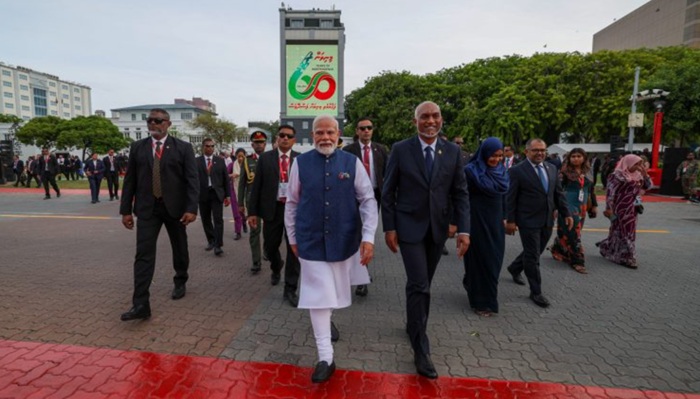
“A neighbour’s prosperity ensures the region’s stability.” This quiet yet resolute belief has long guided India’s approach to its closest partners. Under the framework of the Neighbourhood First policy, India’s engagement across South Asia reflects not only geographic proximity but a conscious choice to pursue regional progress hand-in-hand.
Across Sri Lanka, Indian-supported infrastructure has brought tangible improvements to everyday life. Modernisation of the island’s railways—stations, tracks, and signalling—has revived passenger confidence and accelerated freight movement from Colombo to Jaffna. Similarly, emergency economic assistance during Sri Lanka’s financial crisis, including multi-billion dollar Lines of Credit for essentials like fuel and fertilizers, came when it was needed most, demonstrating that friendship means presence in both growth and adversity.
In the Maldives, the Greater Malé Connectivity Project—India’s largest infrastructure undertaking in the country—is transforming the way communities and markets interact across the archipelago. When health systems came under strain during the COVID-19 pandemic, Indian naval ships and aircraft swiftly delivered vaccines, ventilators, and medical supplies, underscoring a humanitarian partnership shaped by trust.
Nepal’s connection with India runs deep—geographically, culturally, and economically. The Motihari-Amlekhgunj petroleum pipeline, South Asia’s first transnational oil pipeline, has brought a new era of fuel security. Meanwhile, integrated check posts, cross-border rail lines, and power-sharing agreements continue to bridge borders and energize the partnership. After the 2015 earthquake, India’s rapid reconstruction aid helped restore thousands of homes and heritage sites in Nepal’s quake-hit districts.
Bhutan, India’s time-tested partner, has benefitted from Indian investments in hydropower—such as the Mangdechhu and Tala projects—whose electricity exports are not only Bhutan’s economic mainstay but a contributor to India’s green energy goals. Indian scholarships, teacher training programmes, and digital connectivity projects have complemented this growth, enhancing education and governance capacity in Thimphu and beyond.
In Bangladesh, ties have deepened through shared infrastructure and cultural bonds. The Maitree Thermal Power Plant at Rampal and the revitalisation of inland waterways have boosted energy cooperation and trade. Joint initiatives on border markets and digital connectivity continue to generate livelihoods and ease commerce. The regular exchange of students, artists, and civil servants adds warmth to a historically rich relationship.
India’s outreach extends eastward into Myanmar through projects like the Kaladan Multi-Modal Transit Transport System and the India-Myanmar-Thailand Trilateral Highway, enhancing connectivity between Northeast India and Southeast Asia. Despite political uncertainty in Myanmar, India remains engaged in humanitarian and developmental assistance, including food and medical aid for conflict-affected communities.
Even in conflict-ravaged Afghanistan, India’s engagement left a lasting footprint. The Afghan Parliament building in Kabul, the Zaranj-Delaram Highway, and scholarships for Afghan youth were not just diplomatic efforts—they were investments in a future rooted in peace and people.
Crucially, India’s development cooperation is not extractive, but collaborative. Through the Indian Technical and Economic Cooperation (ITEC) programme, thousands of professionals from across the region are trained annually—in agriculture, governance, disaster response, and public health—creating a network of shared expertise.
These initiatives are not isolated gestures but expressions of a larger vision. One in which railways, roads, power lines, and classrooms become the foundations of lasting partnerships. In this vision, India’s growth is intrinsically linked to that of its neighbours. And when neighbours move forward together—with compassion, connectivity, and conviction—the entire region rises. (ANP)
